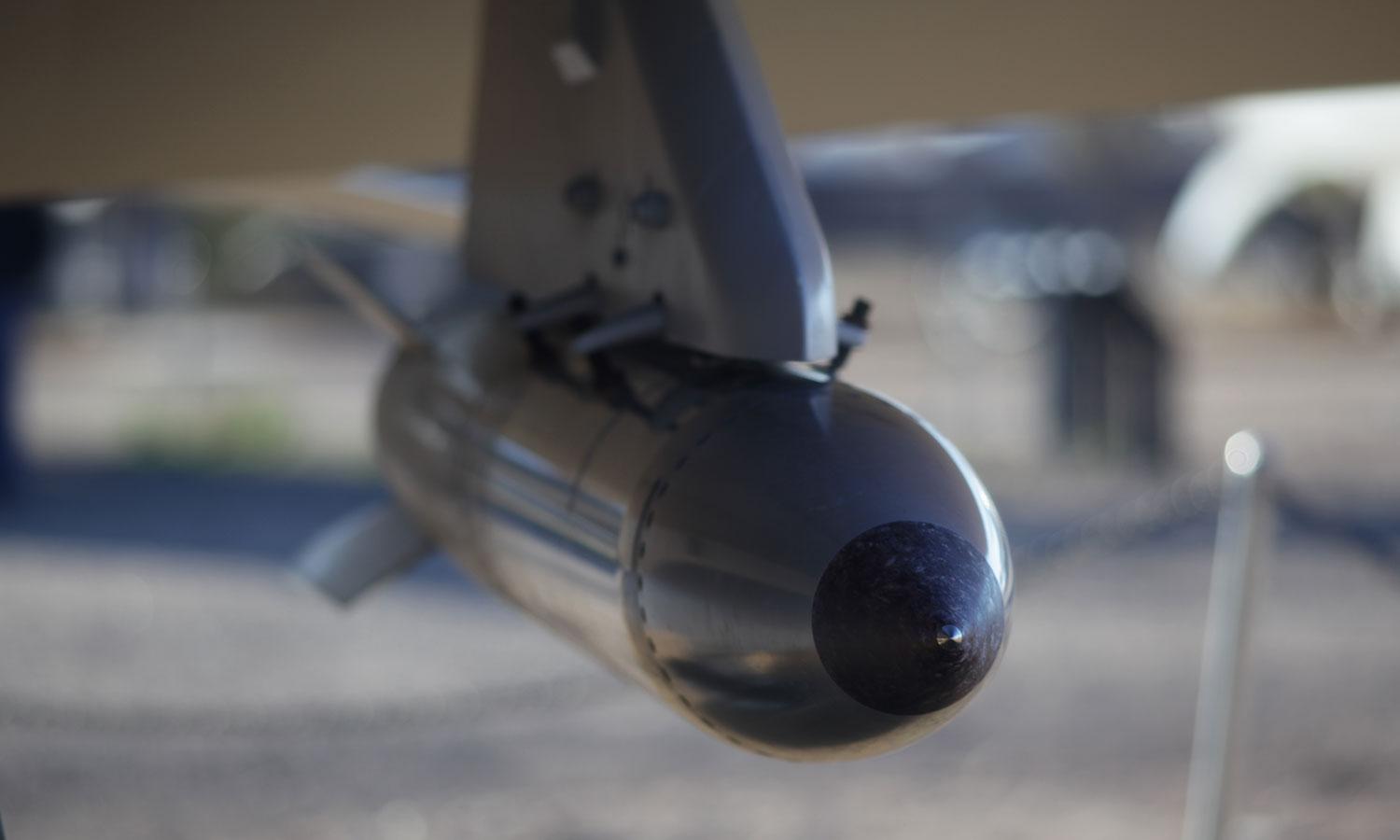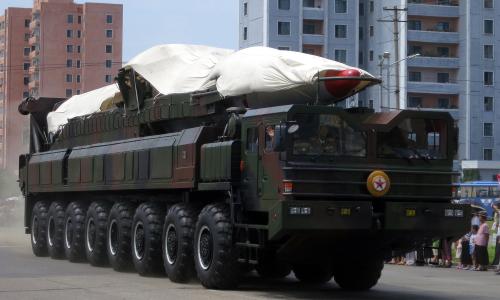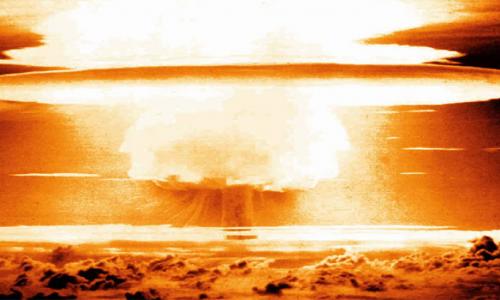The best thing we can do to reduce the danger of tactical nuclear weapons is to eliminate them.
Tactical nuclear weapons, also called nonstrategic nuclear weapons, are generally designed for battlefield use and have a shorter range than strategic, or long-range, nuclear weapons, which are designed to directly attack an adversary’s homeland.
Some analysts describe tactical nuclear weapons as intended to win a battle, while strategic weapons are intended to win a war. Russia’s 2022 war on Ukraine raised serious questions about these weapons, but the weapons themselves have existed since the beginning of the Cold War and their dangers are well known.
Tactical nuclear weapons can have lower explosive “yield” than strategic weapons, meaning they’re explosively less powerful. This may make them more militarily useful, and less politically objectionable, and thus more likely to be used. However, many Russian and US tactical weapons have yields far greater than the bomb dropped on Hiroshima, which instantly killed more than 70,000 people.
While long- and medium-range nuclear systems have been constrained or eliminated by arms control treaties, tactical nuclear weapons have never had verified limits. During the Cold War, the US and Soviet Union built up massive numbers of these weapons in their arsenals, many deployed in Europe. Today’s stockpiles are smaller but still capable of incomparable destruction.
Bottomline: there is no universal definition of tactical nuclear weapons. Indeed, then-US secretary of defense James Mattis declared in 2018 “I don’t think there’s any such thing as a ‘tactical nuclear weapon.’ Any nuclear weapon used at any time is a strategic game changer.”
Use of any nuclear weapon would break the “nuclear taboo” that has held since 1945, dramatically changing the course of history.
What are tactical nuclear weapons for?
Initially, tactical nuclear weapons were simply another weapon in the US arsenal. Dozens of types were designed and tens of thousands produced, some with very low yields designed to be fired by one soldier. Over time, as Soviet conventional forces expanded, US-aligned nations in the North Atlantic Treaty Organization (NATO) began to view nuclear weapons as an equalizer, allowing the alliance to compensate for numerical disadvantages in tanks and artillery.
As both sides developed a range of nuclear weapons, some theorists perceived a need to meet an adversary with equivalent force at every level. Their concern was that if a country only had strategic nuclear weapons, it might hesitate to use them to retaliate against a lower-level tactical nuclear attack because the response would be disproportionate and could lead to an all-out nuclear war.
According to this flawed and dangerous model, the United States needed a vast array of weapons to match every step in the so-called “escalation ladder.”
An even more troubling model relies on the idea of “escalation dominance.” This requires seeking such superior capability at any possible level that rivals are deterred because they see any battle as hopeless. This dangerous theory envisions the possibility of “winning” a nuclear war.
However, as President Ronald Reagan first declared in 1984 and the United States, Russia, China, France and the United Kingdom recently reaffirmed, “A nuclear war cannot be won and must never be fought.”
What tactical nuclear weapons do the United States and Russia have?
The United States has about 200 tactical nuclear gravity bombs with explosive yields adjustable between 0.3 and 170 kilotons. (The yield of the Hiroshima bomb was 15 kilotons.) The Pentagon deploys about 100 of those bombs, called the B61, in five European countries: Italy, Germany, Turkey, Belgium, and the Netherlands.
Meanwhile Russia has nearly 2,000 tactical nuclear weapons with a broad range of yields, from very low to over 100 kilotons. These can be delivered by air, ship, and ground-based systems, some of which also deliver conventional weapons. For example, some of the missiles Russia has used against Ukraine can also carry nuclear warheads, increasing the potential for confusion.

Why are tactical nuclear weapons so dangerous?
The United States and Russia hold 90% of the world’s stockpile of almost 13,000 nuclear weapons. Neither has the capability to wipe out the other’s nuclear arsenal in an initial attack. Both countries understand that any use of strategic nuclear weapons would invite a nuclear counterattack, and the potential of a civilization-ending nuclear exchange.
Tactical nuclear weapons, however, introduce greater ambiguity, raising the possibility that a country might think it could get away with a limited attack, such as using a low-yield tactical nuclear weapon to strike an isolated military target where few civilians would be harmed. Another possibility is a demonstration strike, without any military utility. For example, Russia could explode a nuclear weapon over the Black Sea to warn NATO countries against aiding its adversaries, such as Ukraine.
Because tactical nuclear weapons are considered more “useable,” they increase the risk of nuclear war. US wargames predict that a conflict involving use of tactical nuclear weapons will quickly spiral out of control. A Princeton University simulation of a US-Russian conflict that begins with the use of a tactical nuclear weapon predicts rapid escalation that would leave more than 90 million people dead and injured.
Have there been efforts to control or eliminate tactical nuclear weapons?
As the Cold War ended, President George H.W. Bush realized that the huge US and Soviet nuclear arsenals created unnecessary risks, and that tactical nuclear weapons were particularly dangerous. In 1991, he announced the elimination of virtually all US tactical nuclear weapons, including all tactical nuclear weapons deployed on navy ships. Thousands of weapons were retired, and most were destroyed.
President Bush saw the danger as so great that he acted unilaterally, with no reciprocal commitment from the Soviet Union. However, Soviet President Mikhail Gorbachev did respond, retiring many types of tactical nuclear weapons and removing all tactical nuclear weapons from surface ships and multipurpose submarines.
What can we do to reduce the dangers of tactical nuclear weapons?
Until tactical nuclear weapons are eliminated, these immediate steps would help reduce the danger that they present:
- First, the United States can commit to not develop or deploy any new tactical or low-yield nuclear weapons, such as the nuclear sea-launched cruise missile (SLCM-N) the Trump administration initiated.
- The US should withdraw the 100 tactical nuclear gravity bombs based in Europe. They have remained there for political reasons, to signal US commitment to NATO. If reassurance is needed, conventional forces would have more military utility.
- As soon as feasible, the US and Russia should negotiate a new treaty or agreement to control and eventually eliminate tactical nuclear weapons. An agreement to limit and control the types of weapons that each side finds most “useable” could reduce the danger of misunderstandings and potential for nuclear escalation in a crisis.
- Finally, the United States could implement a no-first-use nuclear policy, declaring that it will never be the first to use nuclear weapons. Although this would not remove all the dangers of being drawn into an escalatory cycle if an adversary used a tactical nuclear weapon first, it would clarify that if an adversary did not cross that line, the United States would not be the one to start a nuclear war. This would be in the US interest, since its conventional military is the most powerful in the world.
The Union of Concerned Scientists has worked on nuclear weapons issues for more than half a century. We’re committed to a world free of nuclear risk—and you can help.



